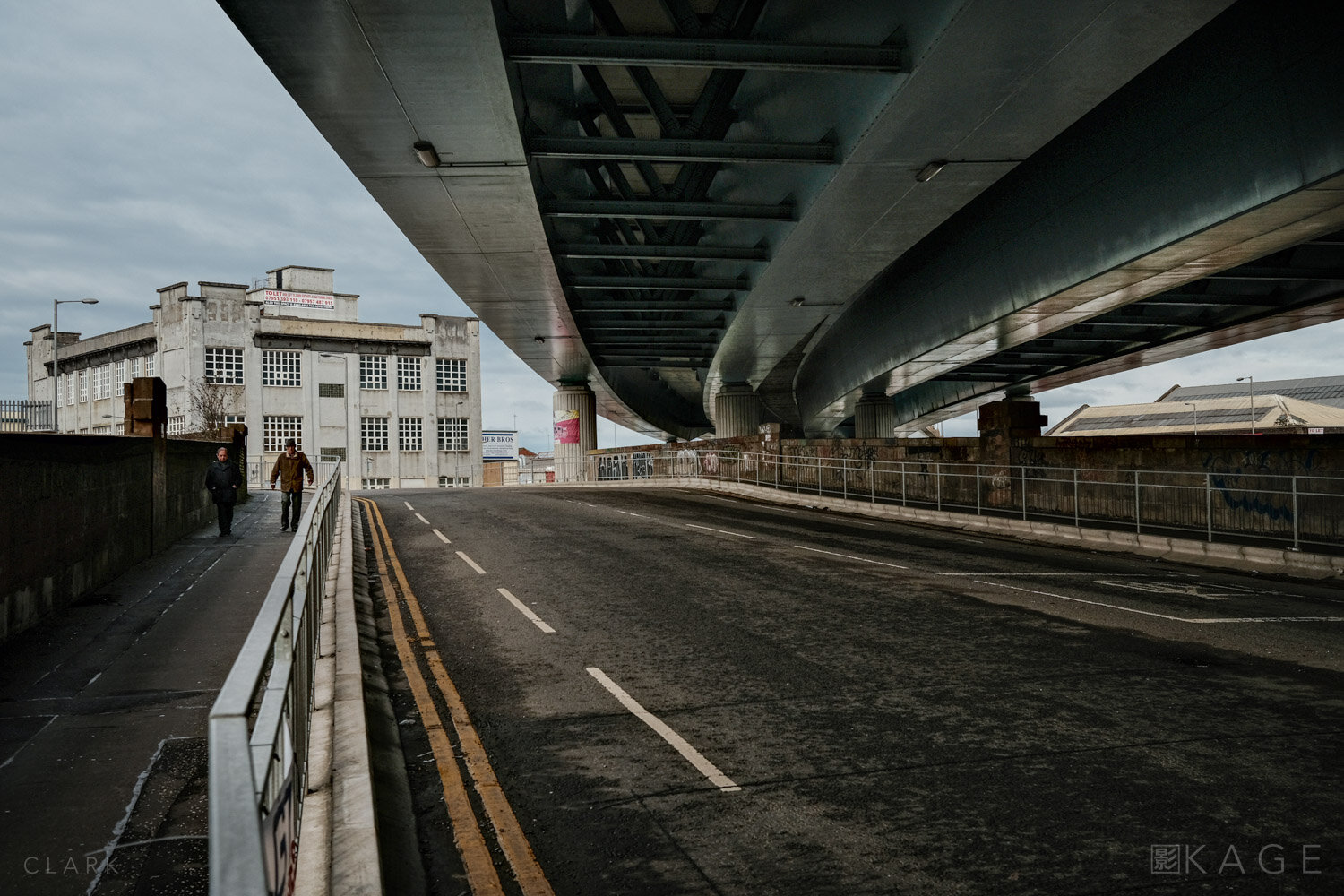My biggest chance to shoot has been when my nephew (for whom we’re a support bubble) has come to stay for a few days. Eager for any opportunity to go out and shoot and with my newly purchased X-E4 to try out he has been my little muse for these government-enforced dry spells. And, whilst my ever-patient nephew has generally accepted my photographing pretty much his every movement with a winning-smile (or at worst, a disdained stare), there is just one caveat on which he insists … “PESE CAN WE GO TO THE PAAAARK DADA?”
Over The Rainbow
A little while ago I found an essay online, written by my grandfather.
I never met him, he died in 1960, almost a decade before I was born; but through an accident of timing, he spent WWI in a German prison camp. Instead of becoming a concert pianist, which is what he was studying there at the time, he became a psychologist and professor, and wrote a book about the society that sprang up in the camp in the years he was held.
Later, while working for the Canadian government during WWII, he wrote for Maclean’s magazine about how difficult it was going to be for the soldiers and prisoners returning from the war, the trouble they would inevitably have returning from that experience to “polite society”, and how their imaginations of life back at home after all that time away would inevitably lead to disappointment with the real thing.
I think that’s what the return to relative normalcy will be like for all of us, as the pandemic starts to get under control around the world…
Anything but the Highway
PHOTOGRAPHY AND BERT STEPHANI
I chose this picture by Derek Clark from his essay Death by 74 cuts to use as my theme. I love the graphic nature of that image although I’m usually trying to stay away from highways. I had a busy week and very little spare time to get on my bike AND shoot a story, so I tried to combine both.
Anything but the Highway
I get the idea: the fastest way to go from A to B. It’s useful but the fastest way is usually not the most interesting one. Whenever I can, I take the backroads. And ever since I saved up enough money to buy my first mountainbike when I was 16, I’ve been attracted to the even smaller unpaved roads. For decades one after the other was asphalted for the sake of progress. But in the last few years, it seems like there’s a renewed appreciation of unpaved roads and paths. Even some new slow roads are built without concrete or asphalt.
It was only when I was brainstorming about this story that I came to understand that the unpaved roads serve as a metaphor for the ways I choose to travel in my life and career as well.
Death By 74 Cuts
PHOTOGRAPHY AND TEXT BY DEREK CLARK
I chose this picture by Patrick La Roque from his essay Puddles Are Windows and Fissures are Roads to use as my theme. I almost chose dogs, as I can see two dogs in the top left corner, but in the end I chose differently. The converging lines in that same corner reminded me of roads, and the top of the picture feels like decay. Possibly converging lines cutting through the underdogs?
Death By 74 CUTS
The city of Glasgow, like a lot of highly populated places, is going through constant change. The always present cranes across the city skyscrape erect building after building, rubbing out the old and redrawing the new. But this only makes the places that are being left behind stand out; a slow painful demise. Tradeston is one such place, an industrial area that has been neglected for years. Decades of decay joined with decades of graffiti and vandalism.
In 2011, the M74 motorway was completed. Although construction started in 1966, the M74 didn’t reach its intended destination until 2011. This monster of a road rises up on stilts as it cuts a path straight through Tradeston, barely revealing what lies beneath to the unsuspecting drivers. But still, I’m drawn to this place, and I will probably return to document it more before it gets torn-down in favour of luxury flats or offices.
The Chain: An Introduction
By Patrick La Roque
One year of the pandemic. I’m sick of it, you’re sick of it…we’re all tired of hearing or reading about it. But I write this on March 11, 2021—the official, international commemorative day; it’s hard not to acknowledge. The flags here are at half-mast and the church bells rang as we observed one minute of silence. What some people have lost is beyond words.
It was clear from a recent meeting that all of us in the collective (like most of you, I’m sure) have also been deeply affected creatively. But it was obvious we all needed to get our act together and carry on. Feeling inspired may be hard, opportunities may still be few, but settling into apathy is the worst thing any of us could do. Eventually, it only leads to a mild dissolution of our soul.
Besides: life appears to finally be changing for the better. Jonas—our resident physician on the front lines—was vaccinated. We all should be in the coming months. We’ll step out of our closed circles again, tentatively at first, I imagine, but with increasing confidence.
We’re a stubborn bunch, us humans.
…
The Chain isn’t a theme, but a mechanism. We’ve decided to steer clear of an overarching subject this time, and instead use each story as a springboard for the next one. If you’re familiar with the surrealists’ exquisite cadaver (or corpse) technique, the concept is similar (1). The idea is that each of our individual essays will be inspired by an image from the one that came before. We’ll then have six days to find and prepare the following week’s content.
Of course, as the first one in line I get to cheat, don’t I? Well, sort of. Last week I read about a re-edition of Robert Adams’ Summer Nights, Walking, from Steidl. Leading me to New Topographics. I love the work behind this movement, but I’ve also always been envious of the name they chose. Downright jealous, really, of how powerful those words look on a page, the images they conjure, and how well they fit their subject: Photographs of a Man-Altered Landscape. Damn.
Long story short, I used this as my springboard, to force myself into a somewhat similar framework to the one we’re adopting. The pictures have nothing to do with the movement or its approach, but they do illustrate a makeshift topography which wouldn’t exist without man’s imprint. And they connect to our still inescapable reality—where imagination remains our only means of travel, however abstract.
We’re excited about this new project and hope you’ll enjoy where it takes us. In the immortal words of Fleetwood Mac: chain, keep us together.
…………………….
With the exception of only seeing part of the previous contribution. That would be hard to do in this case.
























